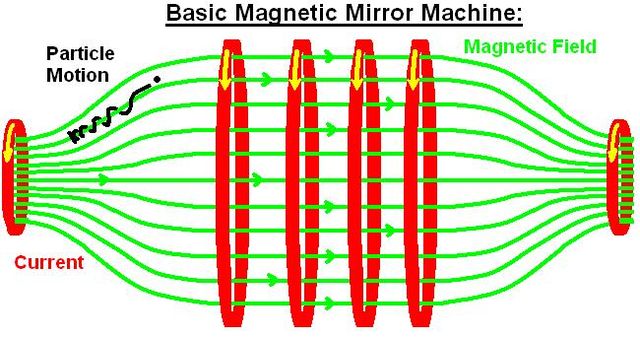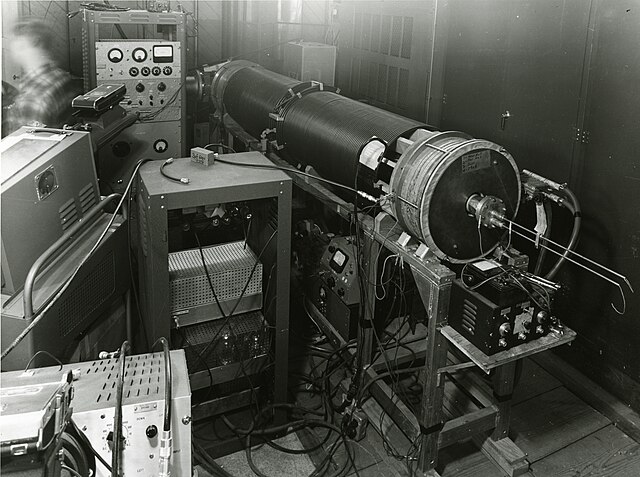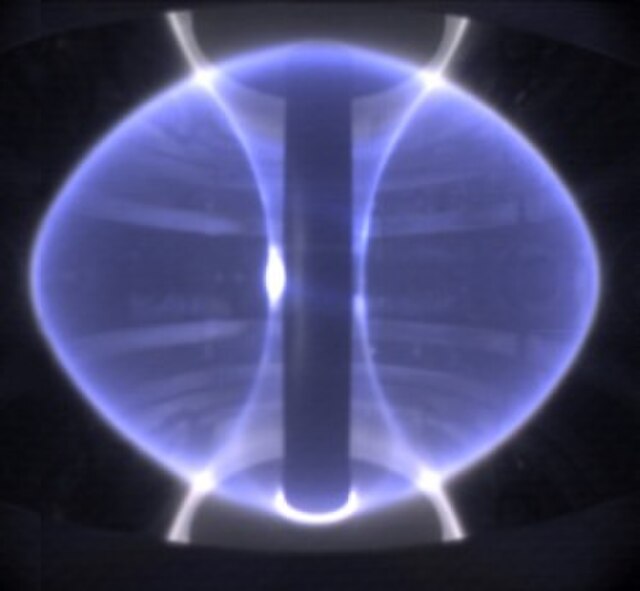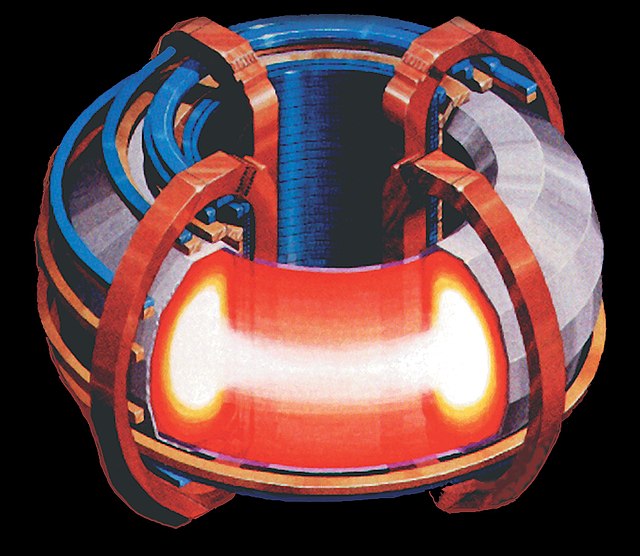A magnetic mirror, also known as a magnetic trap or sometimes as a pyrotron, is a type of magnetic confinement fusion device used in fusion power to trap high temperature plasma using magnetic fields. The mirror was one of the earliest major approaches to fusion power, along with the stellarator and z-pinch machines.
This shows a basic magnetic mirror machine including a charged particle's motion. The rings in the centre extend the confinement volume horizontally, but are not strictly needed and are not found on many mirror machines.
Lawrence Livermore's Q-cumber device, seen in 1955 when it was still classified. It was among the first to clearly demonstrate confinement using the mirror effect.
The Baseball II was a superconducting version of the baseball coil design, seen here in 1969 during construction.
The 1978 2X magnetic bottle experiment. Fred Coensgen is pictured. The cylinder holds one set of neutral beam injectors, the mirror itself is not visible.
Magnetic confinement fusion
Magnetic confinement fusion (MCF) is an approach to generate thermonuclear fusion power that uses magnetic fields to confine fusion fuel in the form of a plasma. Magnetic confinement is one of two major branches of controlled fusion research, along with inertial confinement fusion.
A typical plasma in the MAST spherical tokamak machine at the Culham Centre for Fusion Energy in the UK.
Concept of a toroidal fusion reactor
Cutaway view of the current design for the SPARC reactor







